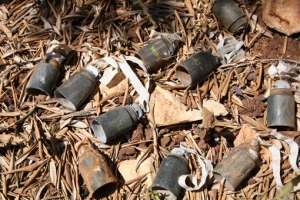 By ACA Intern Valerie Pacer
By ACA Intern Valerie Pacer
The Convention on Cluster Munitions entered into force on August 1, 2010 with thirty-eight ratifications and one hundred and eight signatories. The United States, Russia, China, India, Brazil are just some of the many states that have not signed or ratified this important treaty. Reuters named the United States as the world's largest producer of cluster munitions with a "stockpile of 800 million submunitions."
Parties to the Convention on Cluster Munitions agree to:
- Neither use, produce, stockpile, nor sell cluster munitions
- Destroy existing stockpiles within eight years of entry into force
- Help with the destruction of cluster munitions
- Offer assistance to victims of cluster munitions
The BBC recently highlighted the dangers of cluster munitions to civilians:
Cluster munitions are weapons dropped by aircraft or fired from the ground, which release submunitions or "bomblets" over a wide area. If the shrapnel-filled bomblets fail to detonate on impact they can remain active for years. Some are unusually shaped or brightly coloured, making them attractive to children.
Ratifying the Cluster Munition Convention would be a good step for the United States because of the international goodwill that can be had from ratifying the treaty.
